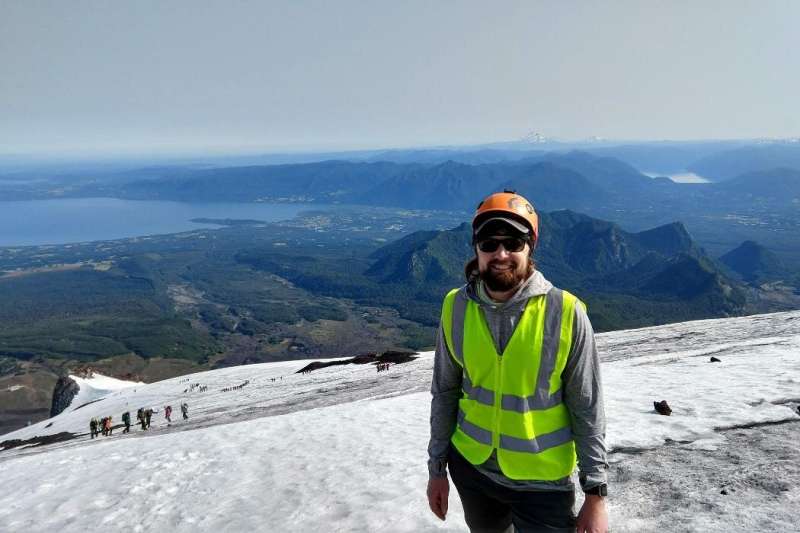Volcanic 'trombone music' could provide early warning of eruptions

University of Canterbury (UC) postdoctoral researcher Dr. Leighton Watson (Ngāi Tahu), in collaboration with researchers at the Italian National Institute of Geophysics and Volcanology and Boise State University, has developed a modeling tool that uses sound waves from volcanic activity to help understand and forecast volcanic behavior.
"The movement of magma in some volcanoes produces sound in a similar way to musical instruments," says Dr. Watson. "While some of the sound waves can be heard by humans, the vast majority of energy is below the lower frequency range of human hearing. By deploying specialized microphones we can listen to volcanoes and use their sounds to understand their behavior.
"Explosions at the top of the magma column excite sound waves, which are reflected at the top of the crater—just like inside a trombone, but on a much larger scale. As magma rises in the crater, the distance between the top of the magma column and the top of the crater decreases. This causes the pitch of the sound to increase—just like when a trombone is retracted.
"By listening to the changing pitch, we can track the movement of magma within the crater. This has the potential to provide several hours of warning prior to an eruption, which could make a significant difference to those living near or visiting active volcanoes."
Dr. Watson and colleagues studied these volcanic melodies at Mt. Etna in Sicily, Italy—an active volcano where eruptions frequently occur, ejecting lava over 1 km above the summit. The work also builds on Dr. Watson's previous studies of Villarrica in Chile and Cotopaxi in Ecuador. The next stage of the research is to adapt the model to make it relevant to a New Zealand context.
"This model is for a volcano where there is a direct connection between the magma plumbing system—the lava lake—and the atmosphere. In New Zealand, two of the most hazardous volcanoes are Mount Ruapehu and Whakaari that have crater lakes containing water between the magma and the air above. Geological and Nuclear Sciences (GNS) already uses infrasound sensors to listen to volcanic activity, so I am interested to see if we can adapt the model to make it applicable to these systems. I'm also currently working on snow avalanches as a proxy system for pyroclastic flows and lahars."
Dr. Leighton Watson's paper, "Infrasonic gliding reflects a rising magma column at Mount Etna (Italy)," was recently published in Scientific Reports.
More information: Mariangela Sciotto et al, Infrasonic gliding reflects a rising magma column at Mount Etna (Italy), Scientific Reports (2022). DOI: 10.1038/s41598-022-20258-9
Journal information: Scientific Reports
Provided by University of Canterbury





















